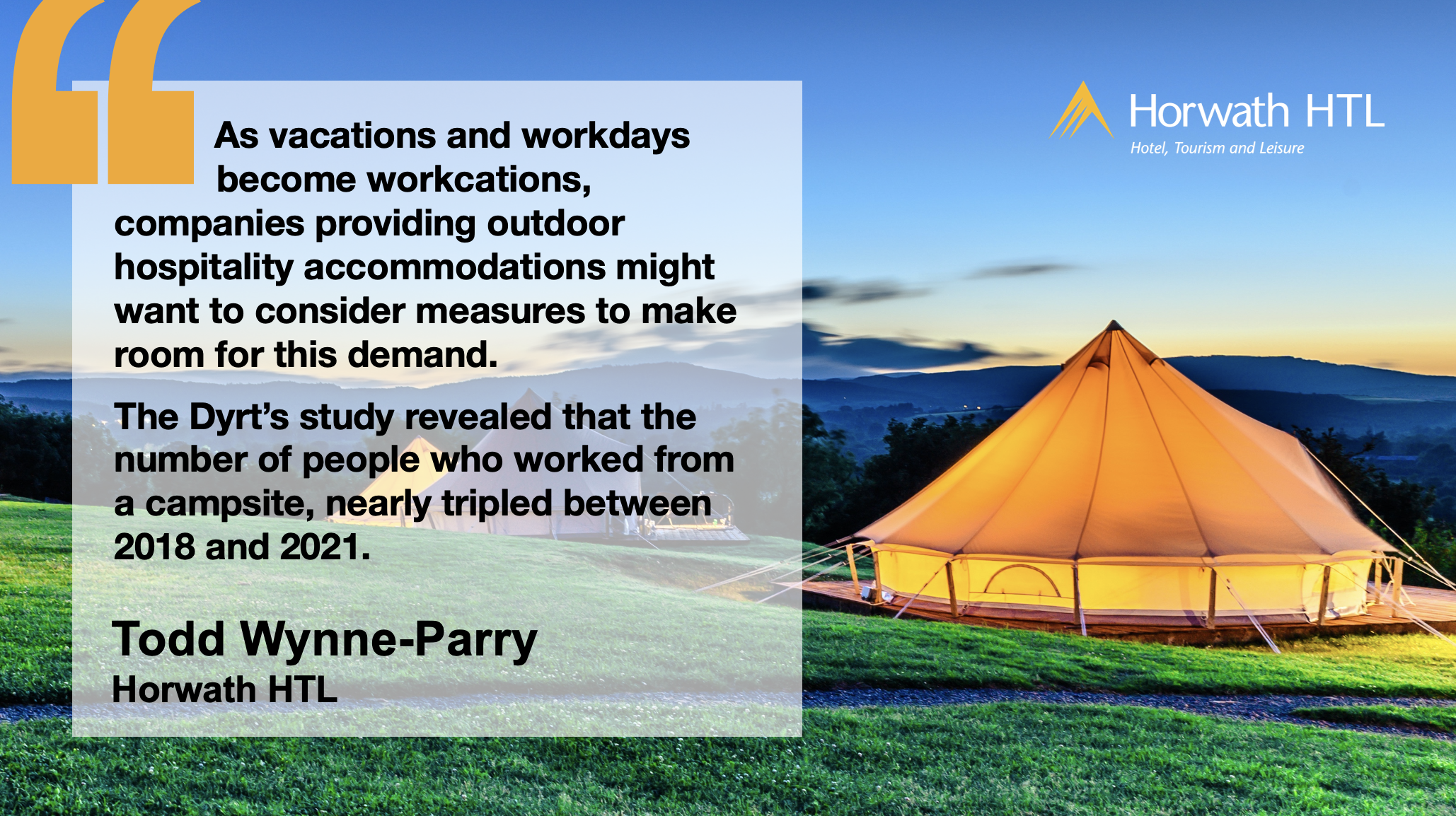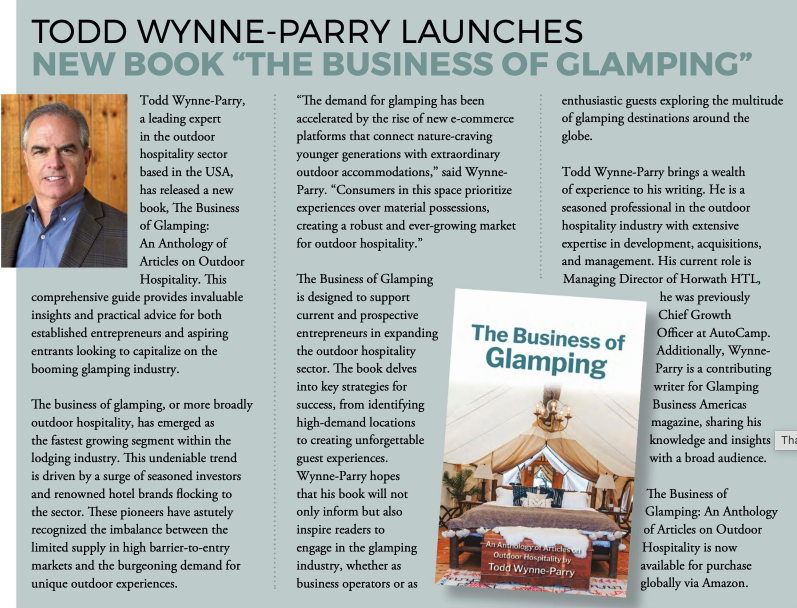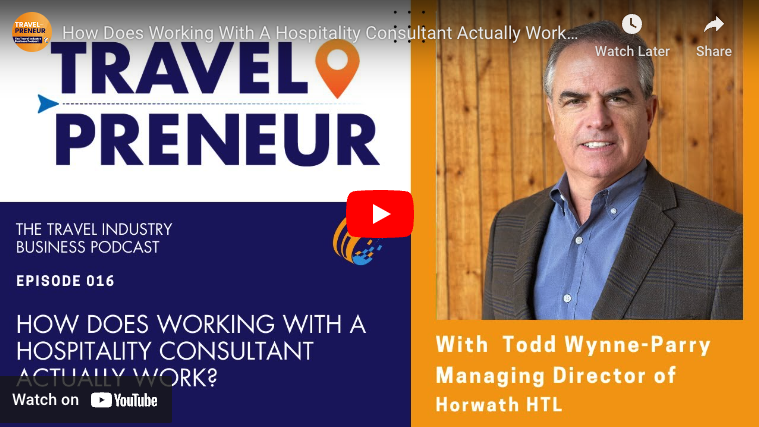
Viewpoint: What parks can do to accommodate ‘Workcationers’.
Date: September 15, 2022
Todd Wynne-Parry recently spoke with Akari Nakano of Modern Campground, on what Parks can do to accommodate Workcationers
As vacations and workdays become workcations, companies providing outdoor hospitality accommodations might want to consider measures to make room for this demand, Todd Wynne-Parry, Managing Director of Horwath HTL Outdoor Hospitality Advisory told Modern Campground.
“Technology has certainly advanced everybody’s ability to get outside more, which is great. People can work remotely,” the outdoor hospitality industry advisor said.
“So a lot of the new RV parks that I’m seeing out there, they really are kind of taking a page out of the resort book and providing a lounge area where people could work if it’s inclement weather or it’s hot out […]; they can work inside or they can just relax inside in a lounge area,” he added.
Gone are the days of workers being confined to their office cubicles to fulfill tasks. Nowadays, people are exploring what’s beyond the four walls of an office building, and exercising a freer lifestyle that combines working and traveling.
Earlier this year, camping app The Dyrt’s study revealed that the number of people who worked from a campsite nearly tripled between 2018 and 2021.
In this new setup, people choose to work remotely at campgrounds to enjoy mountain views or lakefront views while completing tasks for work—and not only during the weekends but on weekdays too.
According to The Dyrt’s 2022 Camping Report, released earlier this year, camping trips now include weekdays for more than half (70%) of campers because weekday camping no longer has to mean using PTO or vacation days.
For Todd Wynne-Parry, people are showing interest in working together alone, and campgrounds can benefit from this by thinking about some upgrades.
While WiFi is a necessity, adding a lounge that can accommodate workcationers is something he considers an important park addition that owners should give thought to.
“People are kind of drawn to one another and they’re happy to be in their own little cocoon while they’re working, but they want to be sort of together alone with other people in a lounge or in a restaurant or whatever it might be. So I think adding that is really important,“ he said.
Something the outdoor hospitality industry can learn from the hotel industry is how it has evolved over time from guests staying in their room and possibly working there to working while in a restaurant, said Wynne-Parry.
Still, campgrounds need not overcapitalize or spend too much money on upgrading. Something as simple as a long picnic table where people can work together can be a start, the expert said.
Another uncomplicated detail that won’t cost campgrounds much is having a warm and welcoming design aesthetic. Having spaces look “cheap” and “too bright or too clean” is not inviting, he said.
Whether it’s the front desk or camp store, spaces have to look and feel comfortable to be appreciated by guests, Wynne-Parry said.
Once a park appeals to a remote worker, there is also a possibility of them extending their stay.
“[T]hey may say, ‘well, I’m fine here. Instead of going to my next destination, I’ll just stay here a couple of extra nights,’” Horwath HTL’s managing director said.
This can also lead to parks seeing this segment of guests returning because they know the campground is well-equipped to accommodate them.
“[I]f they’re coming back, they’ll go, ‘well, I know I can work there, so I’ll go a little bit earlier and work through the mid-week and then enjoy myself on the weekend and then maybe add on and stay a little more into the mid-week as well.’ So I think it’s an important addition,“ Wynne-Parry told Modern Campground.
—
Read the full article here.



